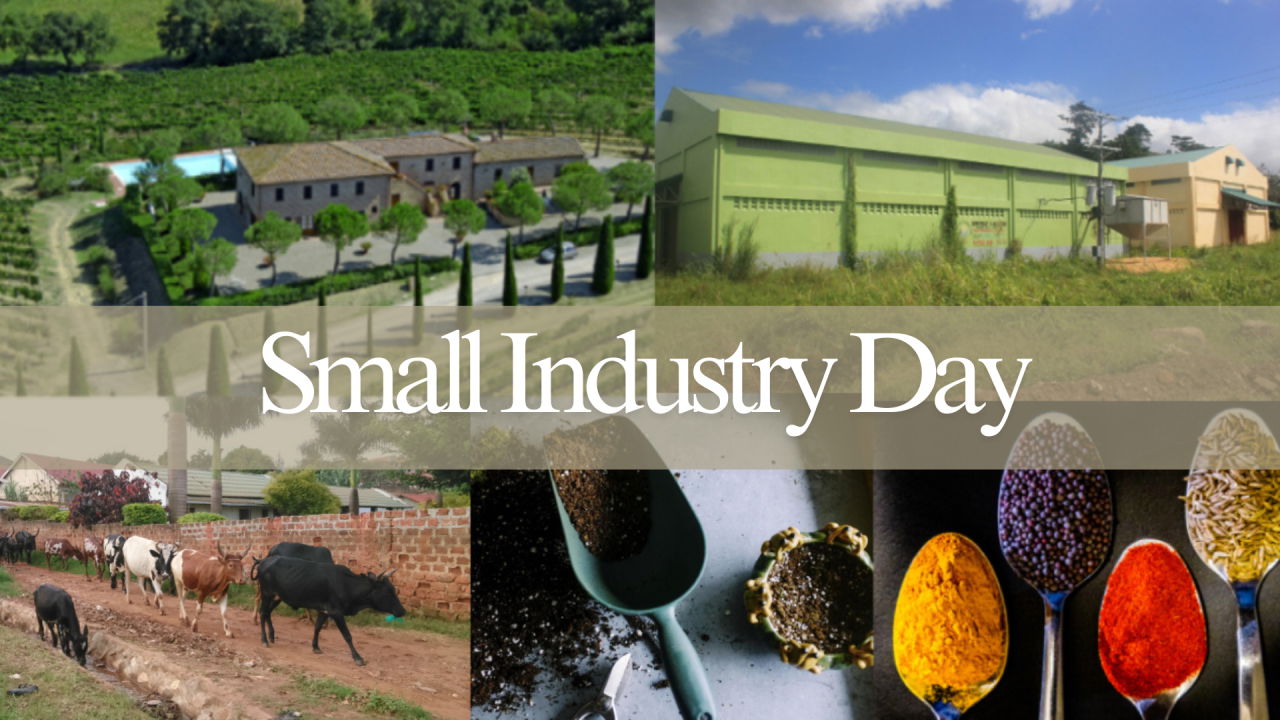
Small Industry Day is celebrated on August 30 in recognition of the invaluable contributions made by small industries to our economy. These industries are often the backbone of local economies, providing employment, innovation, and essential services. On this special day, let’s explore some of the remarkable advancements within small industries related to agriculture, showcasing how they are revolutionizing the sector with cutting-edge technology.
1. Spice Processing
Spice processing is a vital industry that transforms raw spices into the flavorful and aromatic products we use in our kitchens. This intricate process involves several stages: cleaning, drying, roasting, grinding, grading, sieving, and packaging. Technological advancements have significantly enhanced this industry’s efficiency and quality:
-
High-Pressure Processing (HPP): By applying high pressure, this technology eliminates pathogens and extends shelf life without relying on high temperatures, preserving the spices' natural flavors.
-
Cold Extraction Techniques: These methods extract essential oils and flavors using low temperatures, preventing the degradation of delicate compounds.
-
Pulsed Electric Field Treatment (PEF): Short bursts of high-voltage electric fields improve spice extraction and processing efficiency.
-
Vacuum Packing and Storage: This technique removes air from packaging to maintain the freshness of spices for longer periods.
These innovations not only improve the quality of spices but also ensure their safety and longevity.
2. Agri-Tourism
Agri-tourism merges agriculture with tourism, offering visitors unique experiences on farms and agricultural sites. This industry not only provides entertainment and education but also generates additional income for farmers. Technological advancements have transformed agri-tourism in several ways:
-
Geospatial Insights: Detailed maps created through satellite imagery and drones provide insights into farm topography, soil composition, and crop distribution.
-
Virtual Farm Tours: Augmented Reality (AR) and Virtual Reality (VR) technologies create immersive farm environments, allowing people to explore agricultural sites remotely.
-
Geo-tagged Farm-to-Table Experience: Geotagging adds geographical information to media, helping visitors understand the origins and journey of their food, enhancing transparency and engagement.
These technologies enhance visitor experiences and support the growth of agri-tourism as a sustainable and educational venture.
3. Biofertilizer Production
Biofertilizers are eco-friendly solutions that use live microorganisms to enhance soil fertility and promote plant growth. This sector has seen impressive technological progress:
-
Nano-Fertilizers: Utilizing nanotechnology, these fertilizers deliver nutrients more effectively to plants, improving nutrient uptake and utilization.
-
New Biofertilizer Groups: Innovations include K-solubilizers, Zinc-solubilizers, and consortia of microbes that help plants tolerate abiotic stresses and improve nutrient availability.
These advancements make biofertilizers a powerful tool for sustainable agriculture, helping farmers improve soil health and crop yields.
4. Agri-Processing
Agri-processing involves the transformation of agricultural products into consumable goods. This industry is crucial for adding value to raw agricultural produce and includes activities from harvest to packaging. Technological developments have propelled the sector forward:
-
Precision Agriculture: GPS, IoT sensors, and drones offer high accuracy in crop management, optimizing production and reducing waste.
-
Smart Packaging Technologies: Innovations like RFID tags and biodegradable packaging enhance traceability, extend shelf life, and reduce environmental impact.
-
Energy-Efficient Processing: New technologies reduce energy consumption in processing, supporting sustainability efforts and lowering operational costs.
-
Water Recycling and Management Systems: Advanced systems recycle water used in processing, minimizing waste and supporting sustainable practices.
These technologies contribute to a more efficient and sustainable agri-processing industry, benefiting both producers and consumers.
5. Livestock Rearing
Livestock rearing, or animal husbandry, is a critical component of agriculture, providing meat, milk, fiber, and other products. It supports millions of livelihoods and plays a significant role in the Indian economy. Recent technological advancements in livestock rearing include:
-
Breed Improvement: Enhanced breeding programs improve livestock quality and productivity.
-
Institutional Credit Support: Financial assistance helps farmers invest in better livestock and technologies.
-
Improved Livestock Services: Advances in artificial insemination, vaccination, and deworming improve animal health.
-
Disease-Free Zones: Measures to create disease-free zones help prevent outbreaks and ensure healthy livestock.
-
Fodder Production: Efficient utilization of crop residues and improved fodder production techniques support livestock nutrition.
-
Processing and Storage: Better processing, storage, and transportation methods enhance the quality of animal products.
-
Trade Policies: Appropriate import and export policies facilitate the global trade of livestock products.
These innovations improve animal health, increase productivity, and support the overall sustainability of livestock farming.
Small industries play a pivotal role in enhancing agricultural practices and contributing to the economy. From advanced spice processing technologies and innovative agri-tourism experiences to biofertilizers, agri-processing, and livestock rearing, these sectors are continuously evolving. Celebrating Small Industry Day underscores the importance of these industries and their role in driving economic growth and sustainability. As we recognize their contributions, we also look forward to the continued innovation and progress they bring to agriculture and beyond.










